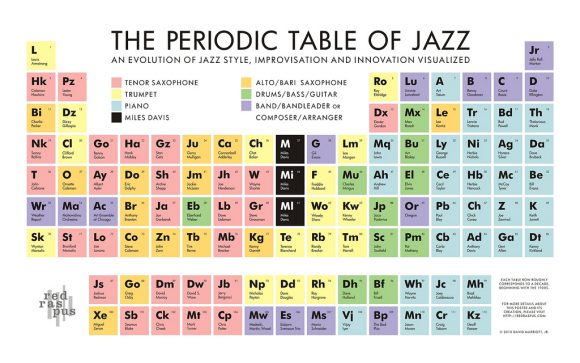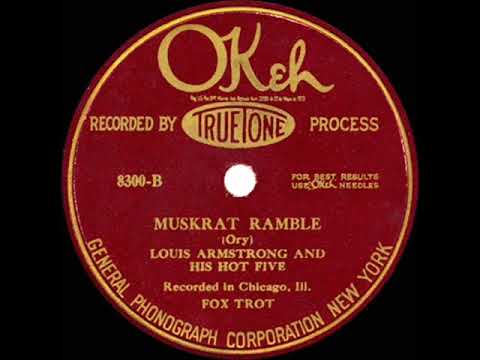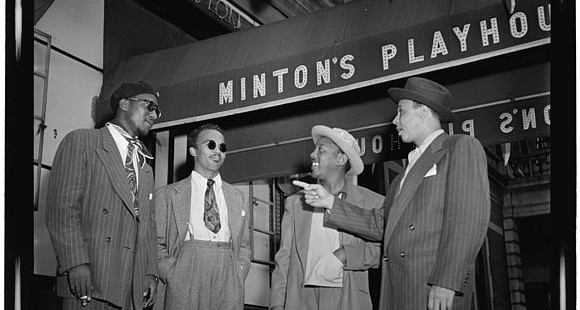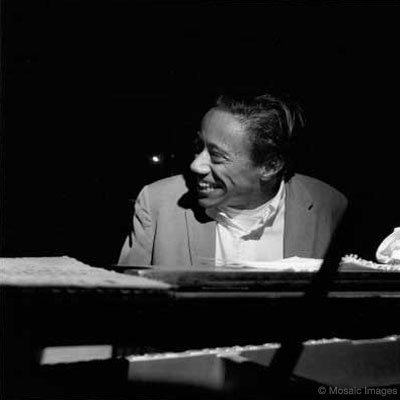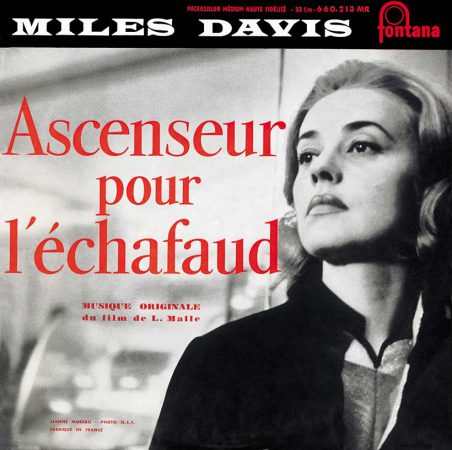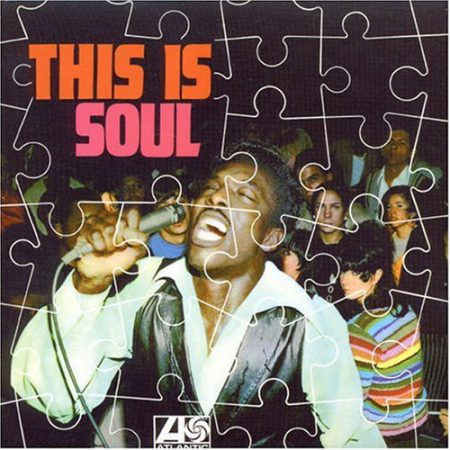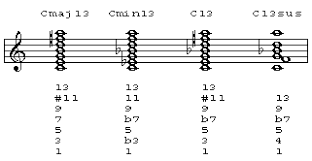[This post originally went up at my PATREON: subscribers get to read posts and hear podcasts early — and help offset costs and time and help me do more of this kind of thing]
A week or three back, my old ilxor pal Kerr put up a list of jazz genres on FB and asked his followers who could define them. And bcz we’re dicks, we gave him a dusty answer (mine, in full, was “I can!”). We played mean games; we suggested he google. And so he did — fair play — and of course the joke was on us, bcz the results (wikipedia!) were terrible, full of error and sententious assumption. Some true claims — especially in the endless lists — mixed in with much confused nonsense and (wikipedia!) inapposite citation.
My dusty answer wasn’t just about being a dick: Kerr’s question had landed right on top of something that’s bothered me for decades. Which is why people often write so badly about jazz — including people who know a lot about it (a lot more than me anyway). They can get the facts right — the chords, the analysis — but then miss the point. They write well about the players’ lives and character, and about the feel. But when they write about what the musicians actually think they’re doing, and think about what they’re doing, it all goes cock-eyed and dull — as if being fully conversant with musical technique and terminology acts as some kind of huge mental block.
And some of this is because music is hard to write about! And because a lot of jazz since the 1940s has been a kind of “music about music” — musicians playing to and at musicians, in other words, to excite or entertain or to baffle them, to engage or surprise them (if a paying public just about keeps up, buzzed or puzzled in turn, that’s a bonus more than a goal).
Anyway, instead of a glib too-quick FB-type response, I wanted actually to dig deeper, and talk through and shake out some of the problems as I answered the question — because I think the problems are also a part of the answer.
Kerr’s full list was this: BOP, MODAL, HARD BOP, SOUL JAZZ, POST-BOP, FREE JAZZ, JAZZ FUNK and AVANT GARDE. Well, I have books on my shelves which take hundreds of pages to cover the relevant half century usefully. To keep my answer short (lol), I’m going to break the timespan in two (40s to mid-60s), and run through bop aka bebop, hard bop, modal and soul jazz (in this order bcz there’s not much to be gained from breaking historical chronology; the rest in a later piece) (maybe). And this is also an experiment in describing the micro-branchings of genre — the when and the which and the why — and an exploration of what’s actually at stake for the musicians themselves without assuming too much prior knowledge of the technical language that musicians use at one another. Possibly the experiment will merely irritate those already fully in the know (schooled players and composers), but it at least affords a space for someone similarly frustrated (me) by much of what we routinely get (written and on-screen) to think through how to offer those very much wishing to be in the know (like Kerr) the beginnings of a sense of where and how to start thinking about such things. You can to tell me afterward how successful it’s been…
TALKING ABOUT GENRE: In and out of jazz, there are several ways to unpack genre. None are bad, but all have limits and drawbacks…
A: The first and easiest is basically lists: of relevant performers and (recorded) performances. You reel out a bunch of names and titles and entirely leave it to the listener to join the dots and attempt the correct generalisations about the aspects that in fact matter. Which is little help to any would-be listener who already feels lost or daunted or overwhelmed or incapable or unworthy. Not least because the more precise you feel you need to be, the longer the lists become, and it’s this unmanageable length that’s so fearsome and dreary, as antithetical to the spirit of the music itself as summer holiday homework. Stamp-collectors (some would-be listeners will definitely begin resentfully to feel) seem to grasp everything except why…
B: The second blends soap-opera biography with sociopolitics, the sounds so-and-so made as the expressive backdrop to a clickbait morality tale about their life and times. And the politics often become a too-broad generalisation blurring everything into everything else (“the blues is an outpouring of SUFFERING”) while the the romantic biopic is surprisingly routinely an erasure, of those colleagues whose lives and voices just didn’t unfold flamboyantly tragically; of those they worked with in the exact same milieu whose luck — and whose character perhaps — was just different. Which is kind of the point and the problem: large swatches of the process of art-making is the opposite of soap opera. It’s actually quite clerical. It’s unrealistic to imagine soap opera will never intrude – some musicians be being divas — and yes, mood-painting is some of what’s going on, though in jazz it’s nearly always collective and thus conflicted (lol “dialogic”) (lol lol “dialectical”), and as often as not it’s pushing hard away from the corny clichés of hand-me-down just-so-stories. Which is why these sketch portraits, even when they’re meticulous rather than tabloid, can deliver music analysis that that’s simple-minded, impoverished, or (per the current trend in music documentaries) fundamentally anti-musical.
C: The third is production history, the exploration and awareness of how record companies and record shops have packaged certain musics at certain moments, to direct it to the attention of they hope will buy it. Genre necessarily combines generalisation (the words are related), plus how you use examples pulling against one another to sketch limits (when so-and-so is a bebop player and when he isn’t). And for marketing purposes the algorithms of sameness (“if you liked x you’ll like y”) often have to interact with the happenstance of variation (“you’ll learn stuff from y you didn’t find in x”): if only because they want to keep buying (and you won’t if the early stuff supplies everything you need). Musicians often greatly resent this — not always out loud. Miles disliked the word “jazz” altogether — for a variety of reasons, including the fact that he felt it came from an insulting and dismissive root, but mainly in the end because he thought it limited his potential listenership. Some people arrived were coming expecting a thing he didn’t quite do, he felt, and left annoyed — while others never arrived at all, bcz they thought they knew what he did (“jazz”) and never found out what he did do. Meanwhile Louis Armstrong (or possibly Ellington) famously said “There’s only two types of music, good and bad… “
D: Fourth, of course, is full-on scare-the-horses musicology, complete with scales and key changes, types of harmony, families of chords, cadences, modulations, modes and more, much more — the technical insider-speak that composers and musicologists and many performers can’t avoid communicating within. Even unschooled musicians that don’t read will develop their own in-group shorthands — because this jargon is often very necessary, and cumbersome (as we’ll see shortly) to sidestep. It lets players work out how to be in the same place at the same time, moving in an agreed-on direction — all things that could take forever to describe other ways. If you want locate yourself in a landscape, and find the stuff you care about (nice churches, good fishing, whatever it is), a map is useful! Learn to read maps! But hold a map forever in front of your eyes and anything unexpected in that landscape stays hidden. Or you’re watching football for the very first time and you don’t really follow what just happened then, or why it’s good (or bad). Here’s what won’t help: being handed a copy of the official rules. [Footnote 1]
BEBOP (early 40s to maybe mid-50s) Or just bop. It starts as a post-show activity at Minton’s in New York, for hopped-up musicians to tweak and challenge one another, playing the stuff that wasn’t allowed yet on yr average swing bandstand. It was pretty anti-punter — its audience was other musicians. The fun was leaving behind the corniness, stylistic and emotional, that musicians felt the club crowd mostly wanted. The relentlessness of night-on-night performance needed to make rent in New York City means things quickly get old — and thus boring — and these guys (they were nearly all guys) needed a change of game.
Cutting contests was already a thing in African American culture, of course — from “the dozens” (first recorded by sociologists in the 40s but decades older) to the good-humoured stride-piano shows where James P. Johnson battled with Willy “The Lion” Smith to be virtuoso boss on the night.
Bop was more of the same, and from the off not unlike surreal-meme twitter — jagged and quick-fire and weird, full of shared in-gang gags to gather the in-crowd in, and keep the dullards at bay. “Martian” was a term unconvinced outsiders used of it, and impenetrability was the hook. The tunes were frenetic and off-centre, technically hard to master as rhythms and as notes, with unexpected accents dropping like disorientation bombs. Its harmonies were demanding at best — not just because the speeds — and in the hands of some plain peculiar. Monk’s (for example) were just undecodable for years afterwards: you had to accept them and trust him and adapt. This was a micro-world of young ambitious men in mid hyper-competitive musical banter, their solos are full of intensely topical quotes, tricky almost catchphrase-ridden figures, wild top-this runs, absurdist shapes and arabesques and, frankly, zings. The tune was the message-board thread’s OP, and off they charged, owning one another and goosing everyone else present, the fastest, the hippest, the weirdest. Highspeed high-wire stuff — not really party or dance music at all, but a young crowd opening out a new art-music language. “Always radical in the context of formal American culture,” said Baraka of (all) jazz in the early 60s. Looking back from the late 80s, Greg Tate tagged this “always radical” as a pure sci-fi charge injected by jazz into the rest of art, via a practical learnable record-based aesthetic that combined delirious speculation with delirious intensification.
So anyway, I’m setting the scene and throwing around a ton of adjectives here — good and correct ones, to be sure — but I’m not yet getting into the deep nitty-gritty musically. How much harmony-homework-for-dummies would I have to set? Bebop was an angry and a joyful and a deeply learned inversion of norms — and some of those norms probably need to be described, in music composition and in the other stuff musicians do, the stuff that isn’t treating the composer as the absolute cause of the result. Here’s one of those norms: in most composition, melody comes first. Ignoring some very out-there (and very recent in 1940) composed music (hi Bartok!), harmony was practically speaking the structure you build around the melody. Perhaps you found counter-melody that fit, and then the chords this created (any two notes not identical are the start of a chord), and then the colour. Of course in jazz — at least until the 50s — you were improvising on a pre-decided song (yours or from rep): so while the melody in the song came first, the melody that was the improvisation arrives after the agreed harmonic sequence. With bop — and we can make an entire topsy-turvy aesthetic politics of this — harmony is a pre-built obstacle course you writhingly hurtle through, and the wriggles of melody are no longer per se always the emotively central element (trying whistling Dizzy’ ‘Bebop’ in a lyrical manner) [2].
BUT: “There’s no such thing as a wrong note,” said Art Tatum. Isn’t this the opposite of chords-as-obstacles? What if we — to get way ahead of ourselves — argue with Art that any note might make sense against any given chord, if only the notes and runs and turns before it and after it gave it the right meaning at the right moment? The obstacle-free obstacle course! But most ordinary players — Tatum was the epitome of extraordinary — people only really began to adapt to this idea when they started looking back at bebop from a newly argued perspective. [3]
HARD BOP (mid-50s-mid-60s) Bebop didn’t last very long in its earliest formulation. First, as problems got solved, solutions became formulas (there are only so many permutations of possible sequences of chords, and of set moves that let you wriggle through those chords) . Second, because it was being recorded, others could listen and learn at their own leisure. Third, the war ended and the shapes of all jazz changed to adapt to a new, far less frenzied and anxious economy. Fourth, those involved grew older and evolved, some (notably Miles) moving implacably off in their own direction. Fifth, sad to say, Charlie Parker died…
And so the after-hours fuck-you texture dissipated, and the charged and experimentally anti-audience attitude dwindled. Art-musicians (many of them white) moved in to explore the abstract concert-hall dimensions of this boldly self-conscious stab at art, and the formalism got a lot less ornery for a while. While the need to play (the joy of playing) at at dances or wild parties re-emerged, along the practicalities of making music that got played on jukeboxes everywhere. A somewhat black pop sensibility reasserted itself a bit, stepping back into jazz from other streams.
Pianist Horace Silver had a Portuguese dad and a mom who sang gospel — he loved blues and jump and latin music. With drummer Art Blakey — a man who eventually devoted himself to schooling several generations of players in the quiddities of effective performance (the exact opposite of “fuck you”) — Silver helped a squad of players explore vibed-up blues-turned mood, joyful or sexy or melancholy or (now and then) thoughtful. He played with his hands close-set — not stride, not the fantastical architectures of a Tatum or a Powell — in a style that was more longer groove than abrupt obstacle avoidance. An earlyish Silver song is called “Opus de Funk”, and the joke in that early use of the word in a title is deliberate: this was still excitingly demanding music, particularly for the players, but the demands on the listener are no longer so cerebral.
Hard bop kept to the same wide harmonic spectrum — players got a buzz from testing themselves this way, and the buzz arrived as energised style and a showmanship of technique. But the head tunes became less fantastical and the ruling mood was body movement — brain maybe moved back behind feeling in the pecking order of musical logics. In place of hurtling virtuosity or quizzical Monkish strangeness, something much more colloquial and convivial.
Minton’s had been the club that birthed bebop; Birdland is where the Jazz Messengers made their bones — but honestly the founding site of hard bop is Rudy van Gelder’s studio, and the deep warm sound he developed for Blue Note’s sessions. Blue Note more or less being the Motown of jazz: this small-scale, tightly run and curated, strikingly industrious factory-line for a rich but narrow sensibility, designed to be better than serviceable any time you turned to them. The Beatles dropping out of nowhere in 1964 was what did for hard bop: a young person’s music that never over-fetishised youth, it found no ways to adapt its routine to rock’s quite different ecologies of distortion-based tonal colour and showing off.
MODAL JAZZ (^^^arrives with a husky trumpet peal in 1959 after early bookish flickers):
To people who don’t play — who don’t have the landscape of scales in their heads, or the feel of them in their fingers — modes are hard to explain! The first point is this: after the age of bebop, the best way to understand structure is that scales are what matter, not chords any more. And the second, well, remember the obstacle course without obstacles? And how any note’s OK if the stuff surrounding it makes it right? If you ignore the folderol of technical theory, this is what “modal” really actually practically amounts to. The hardcore theory is not wrong, but it mostly gets very deep into the mixolydian weeds of how to rewire a trained musician’s head, to get them to perform as if they always thought in this old-new way.
Bebop chords had become so complex and all-encompassing that they often now included or implied all the notes of a scale: full implied chord as opened-out and out-of-sequence scale. [4]. Pre-bop, we suggested the melody came first, with the harmony to be fitted round it afterwards; with bop, the harmony came first and the improvisation fitted around it. Now, via modes, the two merge. The chord is the scale; the scale is the chord. The centre — to get ever so slightly mystical-sounding — is now the entire piece as it unfolds. Musical meaning no longer derives from an-imagined-but-absent pre-set skeleton — the chord sequence filed in a player’s head — but from what everyone (players and audience) are hearing right now.
(Which is not to say the music never had pre-composed pre-sets: but they could well be tiny, fragmentary ideas, and often were…)
Theorist-composer George Russell pioneered all this in 1953, in a large book with an amazing, absurd, theory-as-killer-robot name: The Lydian Chromatic Concept of Tonal Organization. This set out the argument in its daunting entirety — an analysis of the entire history of music so far — but its force almost certainly came less from its precision than from a kind of all-encompassing vagueness. And then Miles hopped on the train, because (a) it allowed him to do exactly what he wanted, and (b) it showed him a way to underlay improvisations with flamenco-derived scales in ways that were (c) strikingly complex emotionally, and therefore (d) not at all corny.
(The last is by far the most important: if Miles abandoned quickly bebop, he stayed loyal to its most militant turn-yr-back-on-the-audience fuck-everyone attitude… )
Of course, since everything — including all jazz so far — was always (on Russell’s reading) already modal, you could just carry on as you were and be (inadvertently) hip to it. But while it didn’t forbid any of bop’s obstacle courses, it allowed you to invert everything conceptually, like the duck-rabbit — to see obstacles as freedoms more than constraints. And it allowed you to consider the idea that the rules of any given piece emerged from that piece.
What do we even mean by rules now? What we’re talking about is sense of pressure and release: real feelings, produced partly by familiarity, possibly also by in-built responsive tendencies in the way we hear. This feeling of a pressure to movement is ordinarily supplied by a tonal centre: a home chord that harmonies are turned away from or towards; a home note that melodies are turned away from or back towards. A point of return and resolution, like the concluding moments of a hymn. You’ve been ferried out on a journey and now you’re back at a point of rest. Hymns are a very strong version of this — but much classical music and pop works this way too, as does plenty of jazz, complete with departure and return, momentary to-and-fro, and the potential journey-over-adventure-done-and-relax that marks the close of a piece.
Bebop’s hyperquick scribbles also seemed to have home chords and home notes — though perhaps more from habit than need? Certainly bop was full of push-and-pull and to-and-fro — but an agitated restlessness was also part of its politics: happy ease and adventure-done maybe never entirely honest parts of the story of being black in America in the mid-20th century. Blues too has a general sense of a falling back towards a place of rest, but deep blues harmonies and structures are ambivalent kinds of tings, and any resting place seems temporary and uneasy. Modernist composed music also often favoured the non-ending sense-of-an-ending (Anton Webern possibly the emperor of this particular ice-cream).
Modal thinking means just whole fleets of mobile homes: a temporary sense of pull or rest, as conjured up by drones or pedal notes or repeated shapes like ostinatos. So that you feel caught between places of easement. Miles’s late 50s work — ‘Milestones’, followed by Kind of Blue, both well at an angle from what was busily going on around it in hard bop, despite employing frontline hard-boppers like Coltrane and Cannonball Adderley — saw long pre-composed long passages where the underlying harmony doesn’t itself move: it stops being the primary motivating element. (No surprise maybe that his concept emerged first from the soundtrack to as bleak a film as it sounds: Ascent to the Scaffold.)
As a player, Miles uses drift and drag to to render chords and structure somehow permeable: as if they’re blockages to pull against or to refuse. Faster players — Coltrane obviously — have an armoury of techniques, because they can move so far so deftly, but again, within the speed, the sensation often becomes one of being caught within a framework (you never felt trapped in bebop; you often do in Coltrane, early or late). A pianist like McCoy Tyner uses repeated chordal patterns that don’t imply a scale (or sometimes imply more than one), and then play runs and line and patterns against these patterns — as if they’re more a prison or an impediment than a home — or else of course lets the other musicians play runs and line and patterns against them. “I tell them,” said Miles in his great 1985 NME interview with Richard Cook, “don’t fuck around trying to find a tone centre.” As a result (this attempt at removal of something a musician’s ear is likely very deeply trained to be hunting for) is why modal jazz as a sensibility — setting aside its generalised rules or techniques — is often this feel almost of an ominous thickened glue to the air, even when the composed sound is open as you like.
(There’s a whole technical territory of how modes lie across scales, relating to note-starting points that aren’t the same as the scale’s [5]: This is there for musicians to orientate themselves and be able to explain what they’re doing precisely to other musicians — but I am unconvinced it’s enormously illuminating to non-playing listeners per se, since the elements that locate it for a musician often aren’t actually themselves played — they’re a sort of off-board anchor… )
SOUL JAZZ (late 50s to late 60s): When I hear the phrase ‘soul jazz’ I mainly think of the UK record label (founded 1992, to pick up the acid jazz slack), which is maybe not entirely unjust. Obviously the word went way back, of course — it’s omnipresent in gospel lyrics, and Coleman Hawkins’s 1939 ’Body and Soul’ was a massive-selling 78. But it was mostly there to describe the flavour and attitude of a way of living or being in the world — of eating, of believing, of looking out for one another as a community… which of course also applied to elements in the musics you associate with ways of eating, ways of believing, ways of oneness. But ‘soul’ as a name for a widely recognised style of music is a mid-60s thing, really — a rebranding of R&B as it hit the mainstream charts. Ben E. King’s “What is Soul?” is 1966; the Atlantic “This is Soul” comps — answering King’s question — start arriving in 1968. So when Cannonball Adderley was being cross with his record label, Riverside for trying to shunt him into a pigeonhole in 1959, he was complaining less about a stylistic pressure than expressing the musicians’ dislike off the name the label wanted press and public to be calling it: “They kept promoting us that way and I kept deliberately fighting it, to the extent that it became a game.”
Anyway, my argument is mainly that soul jazz was a back-formed term for tendencies in the long tail of hard bop, as elements in jazz and R&B began more and more to overlap, and as a specific strand in black pop had majorly coalesced into something wider (white) audiences were also very drawn to. In their interconnected yet opposed ways, bebop and modal had both encouraged the flowering of a wild range of emotional possibility as a function of audience shut-out. As the drones and grooves and pedal points migrated out of modal jazz to form the basis of funk — this is a cheeky over-simplification — the risk was always that open-audience ‘soulfulness’ could decline into a functional set of by-rote indicators, id-pol moves and formulae, invaluable because so imitable but quite likely to get dadrock-stale quite quickly. Disco is with us still, it’s true, and still mutating nearly 50 years on and very likely still a valuable power — but it’s also never been a music of ambitious youngsters cheerfully vying to one-up one another with all they intellectually and physically have, and chuckling at the audience toiling far far behind. [6]
FOOTNOTES
1: So why aren’t other jargons a turn-off for their fans? With sports, cookery, carpentry, even pottery you can make a documentary that explains (and names) technique and what it does. Someone makes a clever pie or an excellent pass out to the wing, as a voice tells you what’s going on — you can learn and absorb, you can shout back at the screen. If they feel they will be able to drop it themselves in an hour’s time and impress someone else who didn’t watch, people LOOOOVE jargon, and quickly master it. Except this is much harder with music, because talking over it is never appreciated! Even though such youtubes exist, the barriers to full fan mastery are high.
2: TIME and HIGH-SPEED ADVENTURES in OBSTACLE SPACE The quickest route through any structure is a straight line. If the structure forbids straight lines, the route will be some sort of zigzag. In this model of bebop, think of chords as a device for introducing obstacles, and tunes as the zigzags round: internal walls with open doorways in them, for example, and the improvised melody bouncing its way through.
Turn the walls-and-doors model on its side now, and imagine wriggling straight through one of those old boxy jungle-gym climbing frames which is basically a cube of nested little cubes. At regular intervals on this wriggle, you approach and pass through a plane fashioned of horizontal and vertical poles, at right angles to your quickest path.
In an unadjusted climbing frame, the horizontal poles you’re approaching and passing over in these planes are all on the same level. So there’s no obstacle — you can slide quickly through, basically in a straight line. This is your most basic melody, if you like: a single long-held note against the same chord, repeated as a sequence. To elaborate the tune between planes (chords) chords you could move up or down, then along some more, then down or up, and so on, making use of the available gaps in the structure above or below the one ahead ahead— and of course the pitch of the melody goes up or down as you do.
Now imagine these entire vertical planes being variously adjusted up or down before you arrive at them, so that the horizontal poles (and the gaps above and below them) are no longer all on a level. Your quickest journey is no longer a straight line — and every journey through (up or down, along, then down or up, and so on… ) has to adjust to the new limitations. The adjusted planes are now the chord sequence; the gaps you can move through between the horizontal poles at are the notes you are “allowed” to play at each stage [see next footnote also].
Recall that in bebop-world you are travelling at breakneck speed, and that all your decisions are quick as thought. Remember your journeys are the improvisations you are creating — and realise that, in the very small intervals of time between the stages or planes that contain the gaps that constrain your route, you are able expertly to manoeuvre up or down, in scales or jumps, in arabesques or zigzags-within-zigzags. And each player will be approaching the identical obstacled structure, in the same sequence — but everyone’s improvisations will their own dancing round the blockages and through the gaps in ways that (a) reflect the shared taste for intricate fuck-you jaggedness, and (b) reflect their own performed character (Miles was not like Dizzy temperamentally; Monk was not like Bud Powell). Everyone’s different mini-adventures as they scramble through is also a clue sent to everyone else playing the same date, and a comment on one another’s solutions to the problem, in a dialogue quips and shade, sometimes convivial, sometimes more inward-turned.
Except — and this is where the climbing-frame metaphor begins to fail — not all bop was fast, and the obstacles are not physical at all, but established and determined entirely by your ear and your will, and (tricksiest of all) the potential chords in bebop are now so complex that some will argue that all possible obstacles have actually been removed. The an obstacle-free obstacle course
3: Another way an obstacles-and-spaces model goes wrong — a physical metaphor for what’s allowed and what isn’t — is the matter of the ACCENTED PASSING NOTE. Much of the drama and grit in music, right back to Bach (and in fact further, but that’s me out of my comfort zone) is supplied by off-notes that strongly want to move one step up or down, to fit into the chord they’re working against. So basically notes that “go through a wall rather than a gap” are far from forbidden: they’re encouraged! But (paradoxically?) the encouragement firms up our awareness of the harmonic rules: the rules are broken in order to be belatedly obeyed. (The Schoenbergians fashioned a music where the rule was — kinda sorta — that passing notes were never resolved, a music-space where the shortcuts became yet another extremely intricate set of harmonic requirements…)
4: “opened out and out-of-sequence”: I mean that instead of an in-sequence run of notes (G, Ab, B, C, D, E, F, say: a scale), you might get a chord like G, B, D, maybe F, Ab, possibly C, then E: the same notes, but in a different order (with unplayed jumps between them, in this instance the jumps called “thirds”). Except of course this too is simultaneously over-schematic and over-simplified. Any reading musician is already shaking their head; as is any non-reading non-musician, very likely, except in despair rather than exasperation. Is there even a way to explain some of this without having to swallow it all? For example, I have to get across right away how easily — “second nature” as the oxymoron has it — a musician has absorbed and processed the fact that a scale functions like modular arithmetic: after eight note-steps the vibration speed doubles, and these seemingly different notes are considered “the same”. It’s called an octave (“octave” derived from the italian for eighth). As for complexity the next level up, a typical pre-bebop jazz chord will contain three or four different sounding notes (not including octaves): in any order, closed up or distant, G, B, D and F make up G7. A bebop chord might well contain more — sometimes six, occasionally even seven (see the Gb913 chord written out at the beginning of the footnote). This footnote is very much NOT lesson one in mastering these symbols, or the system underlying them: definitely go elsewhere for that, and set aside a week at minimum, and get yourself access to a piano keyboard or similar. What it is is an indication of quite how much tangled detail is packed into a player’s head, why it’s such a phenomenal skill to play at speed — and perhaps also why bop deployed a LOT of pre-set runs and devices as part of the game. Of musicians generally spend a lot of time practicing scales — so the realisation that a complex chord identifies exactly with a scale actually helps reduce the information-pressure. And a surprising amount of strong music — and not just out in the super-complex realms — rests on an ability to recast actually existing super-complexity as immediate and affecting (as a reading eye thing becomes an ear thing).
5: Here — for you to read and instantly forget — are the names of the commonest modes discussed: Ionian, Dorian, Phrygian, Lydian , Mixomydian , Aeolian, and Locrian, plus Hypophrygian, Hypolydian, Hypomixolydian and Hypodorian (which is I think the same as the Aeolian?). In modern jazz terms, these can usefully be considered as 18th century category-distortions of Gregorian Chant theory (developed in the 9th or 10th centuries) fashioned out of a very VERY blurred understanding of ancient Greek music theory (from the 1st to 4th centuries BC or so lol). In the scale of the key of C major, the Ionian runs from C to C, the Dorian from D to D, the Phrygian from E to E, and so on (the Hypos are way above my Patreon pay-grade). Anyway, there it is. As I say, I am unpersuaded that getting your head round the entirety of this helps grasp any better what’s going on in this or that Wayne Shorter joint: like a lot of music, you process a small and intricate element somewhere in all this — different elements for different songs or solos! — and it suddenly unrolls into a revelatory shortcut. Writing it up is all too often doubly the long way round.
6: What I’m going for in this piece is some kind of sketch of the mechanisms — often uploaded to muscle-memory from years of practice and study — by which musicians induce in themselves and one another the widest achievable range of intellectual and emotional and what used to be called “sensible” potential, via stuntwork and grind, precision and warp, togetherness and scatter, anticipation, surprise and reference — and a little of the story (in this history of 30-odd years in one type of music) of how it succeeds for a while and then begins to fail. But also to get across — at some level — the fact that bop was meant as a musical fuck-you to mere musicological recuperation, that the speed and the stance were blocks (by choice) to understanding, and that musicology’s painstaking attempts over the decades to recoup its territory are inevitably only as successful as they have been at cost of eliding this deep and difficult social fact.
[If you like this post, please support my PATREON which will help me write more! Also let other people know that you think might enjoy it… ]


